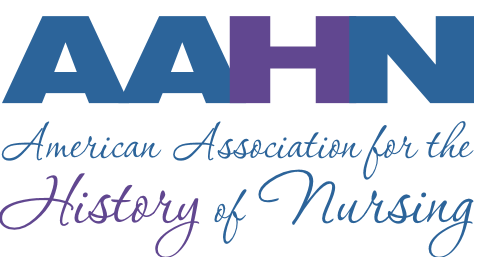- Home
- About AAHN
- Membership
- Research & Resources
- Publications
- Conference
- Members Only
- Contact Us
President's Message August 2021On July 20, 1969, Neil Armstrong and Edwin "Buzz" Aldrin, American astronauts, became the first humans ever to land on the surface of the moon, while Michael Collins kept the module on course above them. Some of you, those of a certain age, will never forget watching the events of that day. I was a high school student at the time on a school trip in Europe. I watched this historic moment on a small black and white television set in a hotel lobby in Switzerland, surrounded by people from all over the world-each of us peering at the grainy images beamed in from space. The American space program that created the Apollo 11 spaceflight grew out of the Cold War. The year after the Soviet Union launched an artificial satellite in 1957, Congress created the National Aeronautics and Space Administration (NASA) to demonstrate American superiority by sending a man into space. In 1961, President John F. Kennedy challenged the country to put a man on the moon and bring him safely back to earth again. In a speech at Rice University a year later, President Kennedy tied the space exploration program to America’s traditional willingness to attempt great things. “There is new knowledge to be gained, and new rights to be won, and they must be won and used for the progress of all people…. We choose to go to the moon in this decade and do the other things, not because they are easy, but because they are hard, because that goal will serve to organize and measure the best of our energies and skills….”. But the benefits to the country would not only be psychological, he said. “The growth of our science and education will be enriched by new knowledge of our universe and environment, by new techniques of learning and mapping and observation, by new tools and computers for industry, medicine, the home as well as the school.” Seven years later, people across the country gathered around television sets to watch Armstrong step onto the moon and to hear his famous words: “That's one small step for [a] man, one giant leap for mankind.” While many remember this moment, another notable achievement occurred at the beginning of the space program. Only this one is less well known. While the space program was getting started, Dee O’Hara was selected in November 1959 to become the first nurse to provide health care for the Mercury astronauts. O’Hara recalls her interview at the time, “I had just arrived at Patrick Air Force Base in May of 1959 when I was called in. They talked about NASA, but I had no idea what they were talking about. They mentioned astronauts and I didn’t know what that was. When they said Project Mercury, I thought, ‘now there’s a planet named Mercury, and there’s mercury in a thermometer,’ and that was the extent of my knowledge. Then when they asked if I wanted the job of astronaut nurse, I wasn’t sure what the job was, but I accepted.” O’Hara was tasked with setting up the Aeromed Lab, the exam area for the astronauts. “When it was launch time, they would come down to the Cape and I would help with the preflight physicals including height, weight, temperatures, blood pressure, etc. I was quite afraid every time they launched. It was like putting one of my best friends on a roman candle.” According to O’Hara, they wanted the nurse to become acquainted with the astronauts and gain their trust so she would know if they were sick or not. As she recalled, “the astronauts were not going to tell the flight surgeon because they knew the doctor had the right or capability of grounding them. So, I made a deal with them. I told them I would never betray them unless, in my opinion, what they told me would jeopardize them or the mission. In that case, ethically I would have to report it to the flight surgeon. They understood that.” She continued, “Pilots are very, very afraid of doctors. They still are.” O’Hara began working with the astronauts at Cape Canaveral in Florida but eventually relocated to the Johnson space Center in Houston, Texas. She resigned her commission with the Air Force and joined the Space Center, setting up the Flight Medicine Clinic in 1964. She also set up the portable hospital at Grand Bahama Island to support post flight examinations and, if needed, to treat injured astronauts after landing. Ms. O’Hara was on duty for every launch in the Mercury, Gemini, and Apollo programs. She noted in 2002 that the astronauts were not her only charges. “In my job, I took care of the whole family, so I knew them all intimately. They invited me into their lives and I still have contact with many of them.” She continued, when we began the flight medicine program, it was new to all of us. We were all learning together. It was an exciting time. For those of us who remember the first moon landing, it still is. Please let me hear from you. If you have stories or memories from this time, I’d love it if you would let me know. We could post several of your thoughts and stories on the website so members can read and share.
Melissa |

